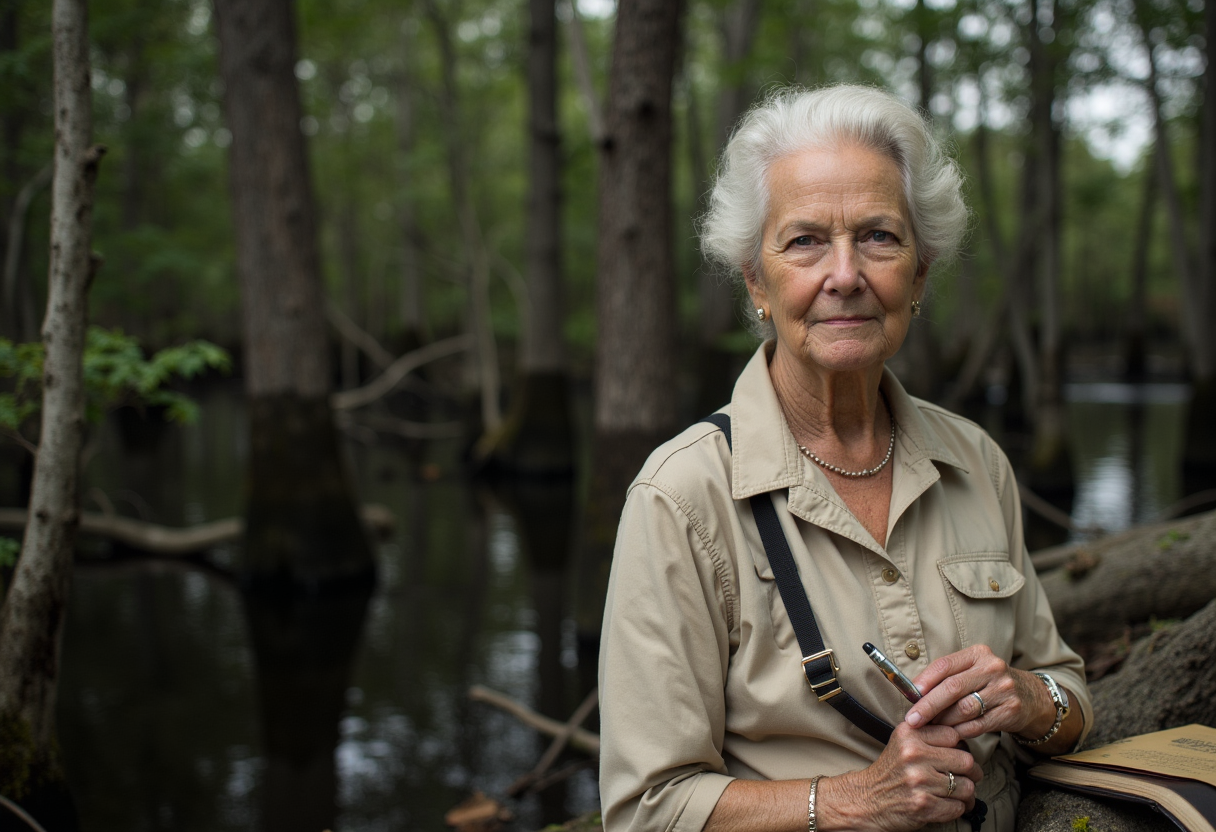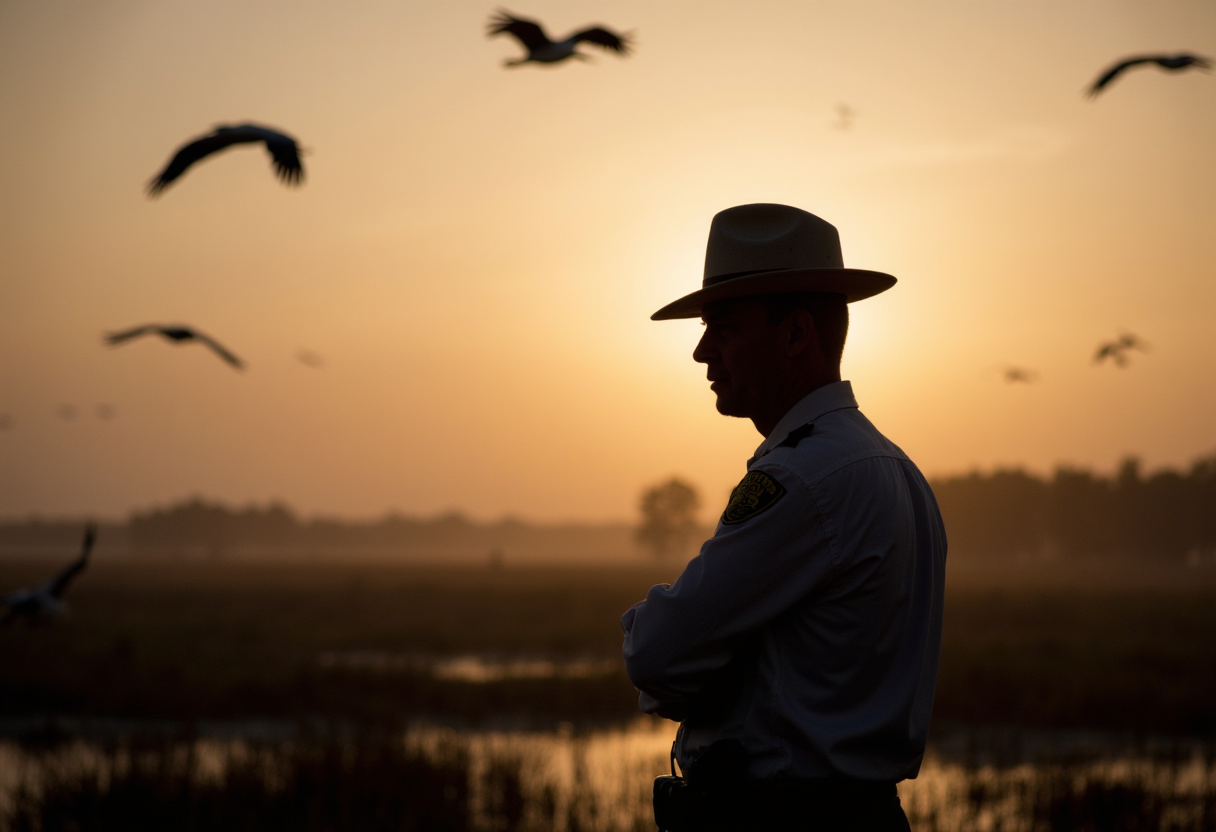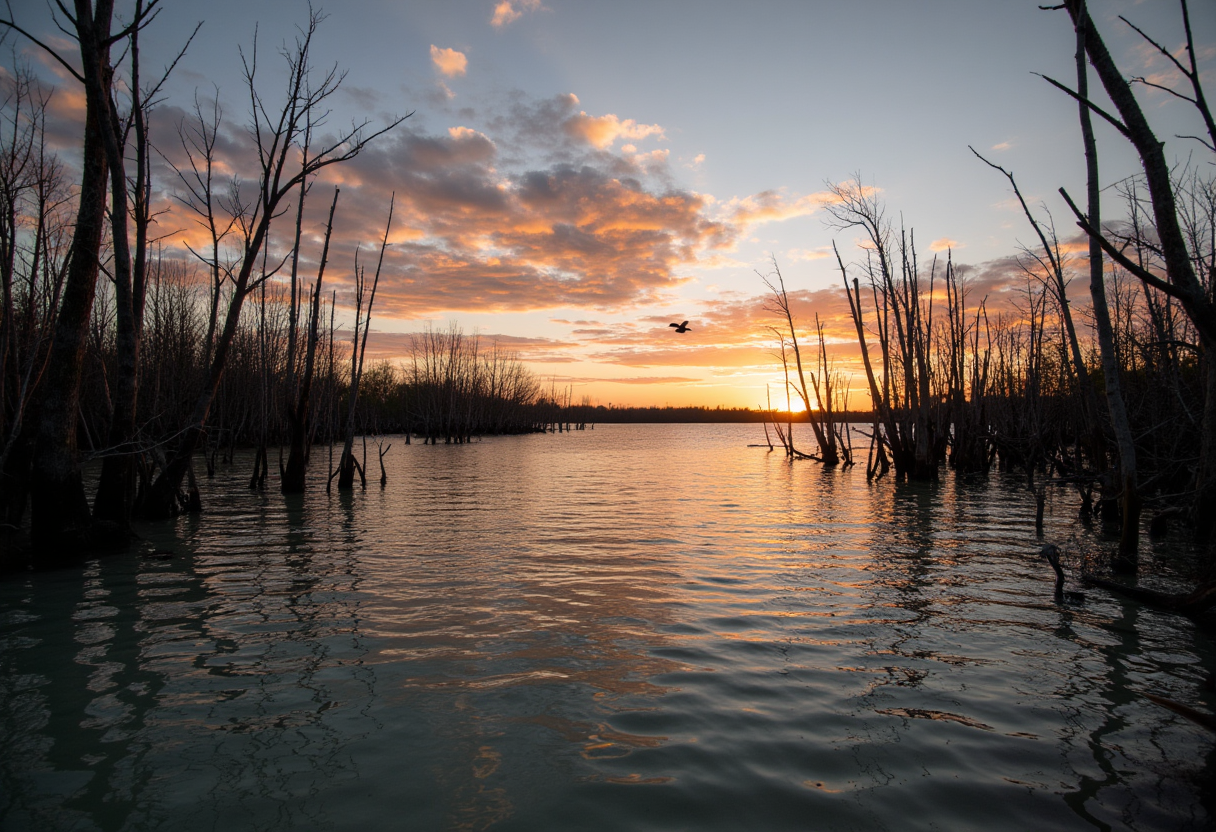Everglades National Park: Gators, Grass, and the Glorious Fight to Save a Swamp
Think the Everglades is just a muggy swamp full of mosquitoes and murky water?
First of all—how dare you. Second, you're not entirely wrong, but Everglades National Park is so much more than that.
Hidden beneath the cypress trees and sawgrass marshes is an epic story full of ancient cultures, ecological miracles, dramatic political battles, and more than one angry alligator. If national parks were comic book heroes,
The Everglades would be the underestimated underdog with a comeback arc and a whole posse of panthers, snakes, and vigilante scientists.
So slip on those water-resistant boots (you’ll need em), rev up your enthusiasm, and let’s dive into one of America’s wildest wonders: Everglades National Park.
What Is the Everglades, Anyway? (Spoiler: Not Just a Swamp)
We’ve been through this, but it bears repeating—the Everglades is not “just” a swamp. It’s actually a slow-moving river—a very flat river, sure—but a river nonetheless.
This “River of Grass” flows from Lake Okeechobee all the way to Florida Bay, stretching across nearly 1.5 million acres of sheer ecological wow.
If you’re wondering what makes this national park so special, take a peek at the cast list: American alligators, endangered Florida panthers, manatees, over 360 species of birds, and more reptiles than most people are comfortable confronting.
Gator showdown at sunset A gator half-submerged in glowing orange waters
Add in gin-clear water, towering mangroves, shimmering sunsets, and a natural flow that scientists call “sheetflow,” and you’ve got a habitat unlike anywhere else in the world.
This place is truly one-of-a-kind. It’s also truly under threat—which makes its story all the more important.
A Collection to Rival the Smithsonian (If You're Into Preserved Frogs)
Hidden deep within Everglades National Park is one of the most extensive museum and archival collections in the National Park Service.
We’re talking 2.8 million+ items. From ancient tools and military reports to field notes penned in the middle of rainy hikes, it’s all stored and preserved at the South Florida Collections Management Center.
Love a good old-school photo archive? The Everglades has you covered. Obsessed with orchids, mollusks, or rare butterflies (like the elusive Miami blue)? They’ve got specimens galore.
Want to snoop through 300+ archaeological sites dating back to prehistoric human activity? Well, you can't do it yourself (sorry, Indiana Jones), but researchers at the Southeast Archeology Center in Tallahassee are working hard on it.
This is where the past meets the present, collecting the stories, voices, and very bones of the Everglades. It’s like the attic of Mother Nature—if she were a genius hoarder with a passion for scientific accuracy.
Marjory Stoneman Douglas Portrait: A compelling, slightly anachronistic portrait of Marjory Stoneman Douglas.
People of the Everglades: Hunters, Heroes, and the Fight for the Future
While many visit Everglades National Park to gawk at wildlife, the human stories flowing through these wetlands are every bit as compelling.
Native American tribes like the Miccosukee and Seminole lived here for centuries, building canoes and crafting complex societies in harmony with the land’s seasonal rhythms.
Then came the “Gladesmen,” rugged white settlers who hunted, fished, and bushwhacked their way through the marshes with more grit than guidance. But as with most land stories in America, someone eventually got the bright idea to drain it. Cue: canals, roads, and a whole lot of ecological heartbreak.
Early developers wanted to “reclaim” the wetlands for farming and construction. Conservationists, scientists, and (thankfully) angry women fought back. One of them earned her place in Florida history forever.
Enter: Marjory Stoneman Douglas, River Defender Extraordinaire
If Everglades National Park had a superhero, it might just be Marjory Stoneman Douglas—a firebrand feminist, journalist, and environmental crusader who literally wrote the book on the Everglades (it’s called The Everglades: River of Grass, and yes, it’s still a must-read).
Born in 1890, Marjory didn’t show up in Miami to become a legend. But once she glimpsed the natural wonder of the Everglades and the mess humans were making of it, she put down the cocktail and picked up her pen.
Over the decades, she battled politicians, lobbied for water flow restoration, and fended off the Army Corps of Engineers with the same savage wit most people save for bad Tinder dates.
Even into her 90s, Douglas continued her mission, forming the Friends of the Everglades in 1970 (which still exists today). She described the ecosystem as “a test. If we pass it, we may get to keep the planet.” No pressure or anything.
Guy Bradley / Plume Hunting Era: A somber yet powerful image. Perhaps a stylized depiction of a bird warden standing watch in the early 20th-century Everglades
Murder in the Mangroves: The Death of Guy Bradley
Before Marjory, there was Guy Bradley—the original Everglades bird warden and one of its first tragic heroes. In the early 1900s, when plume hunting (i.e. killing birds for hat feathers) was all the rage, Florida’s wading bird population was being decimated.
Enter: Guy. Hired by the Audubon Society, he patrolled the Everglades with courage and a strong aversion to poachers. One afternoon in 1905, after ticketing the son of a well-known hunter, Bradley was shot and killed by the boy’s enraged father.
Bradley’s murder shocked the nation and galvanized the born-just-in-time grassroots conservation movement. His grave still lies in Flamingo, a remote section of the park, a testament to the brutal beginnings of environmental protection in America.
Restoration Wars: The Modern Conservation Movement
Fast-forward to today, and the Everglades is still not completely safe. After a century of water diversion for agriculture and cities, the Everglades’ delicate balance is hanging on by a thread of moss.
But thanks to tireless work by scientists, rangers, and Indigenous activists, the restoration effort is not only ongoing—it’s making progress.
Projects to remove old dams, reroute canals, and restore natural water flow are well underway. It’s the largest environmental restoration project in the world—because apparently, it takes that much effort to clean up after bad decisions made in 1910.
Still, this isn’t just about water and wildlife. It’s about cultural memory, history, and making peace with the land we once tried to conquer.
Wildlife So Wild, It’s Almost Mythical
If you're visiting Everglades National Park hoping to have a wildlife experience you won't shut up about—good news.
There’s a good chance you’ll spot an alligator sunning its mossy belly on a log, a great egret strutting like a runway model, or even a manatee snorting around the water's edge.
Look closely and you’ll find other long-time locals: tree snails painted like pastel candy, river otters, ospreys, and the shockingly pink roseate spoonbill (basically what happens when a flamingo and a pelican fall in love).
If you’re very, very lucky (or unlucky, depending on your fears), you might even glimpse a Burmese python—an invasive species that’s turned parts of the Everglades into a real-life monster movie.
Don’t worry, though—most of the snakes keep to themselves. And frankly, they’re not the most dangerous thing in the swamp. Mosquitoes, meet tourists.
Plan Your Visit (And Why Everyone Should)
So now you know. Everglades National Park isn't just a trip—it's a pilgrimage. Whether you're exploring by foot, airboat, kayak, or good old imagination, you’re stepping into a living tapestry woven from water, soil, sky, and time.
Need adventure?
Paddle through the maze-like mangrove tunnels. Love history? Visit historic Flamingo or make your way to the Nike Missile Site HM-69 (yep, Cold War secrets tucked into the wilderness). Into birding? The Everglades is Coachella for the winged crowd.
Sure, it can be hot. And buggy. And wild in the most untamed sense of the word. But you’ll leave the Everglades with something rare these days: awe.
A breathtaking sunset over the Everglades, with crystal-clear water reflecting the colors of the sky, towering mangroves silhouetted,
Final Thoughts: Protect What Protects Us
Everglades National Park is more than a unique ecosystem—it's a protective shield for South Florida’s drinking water, a source of scientific discovery, and a monument to what humans can accomplish when we stop bulldozing and start listening.
Yes, it’s a treasure.
Yes, it’s at risk.
But it’s also alive and kicking—and with a little help from the friends of the Everglades (that includes you now), it’ll be here for generations to come.
So next time someone tells you the Everglades is just a swamp, set them straight. Or better yet—take them there. Let the gators, ghost orchids, and haunted history do the talking.
Earl Lee





